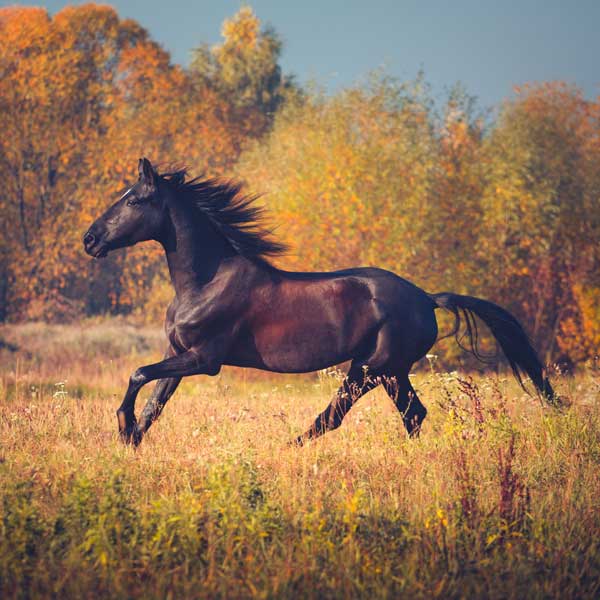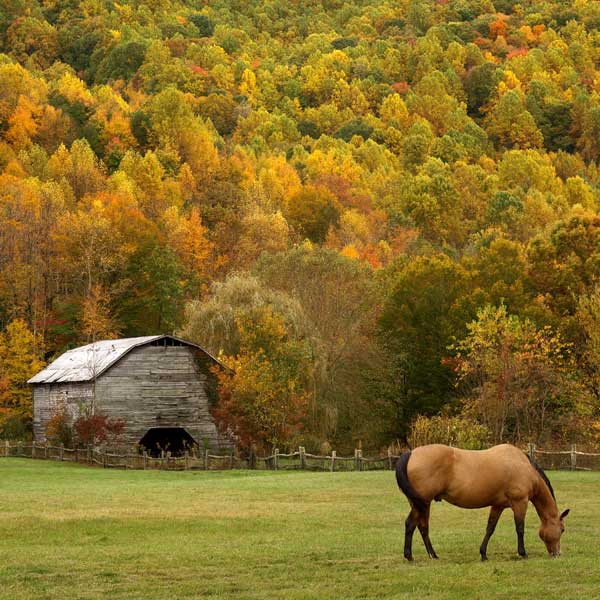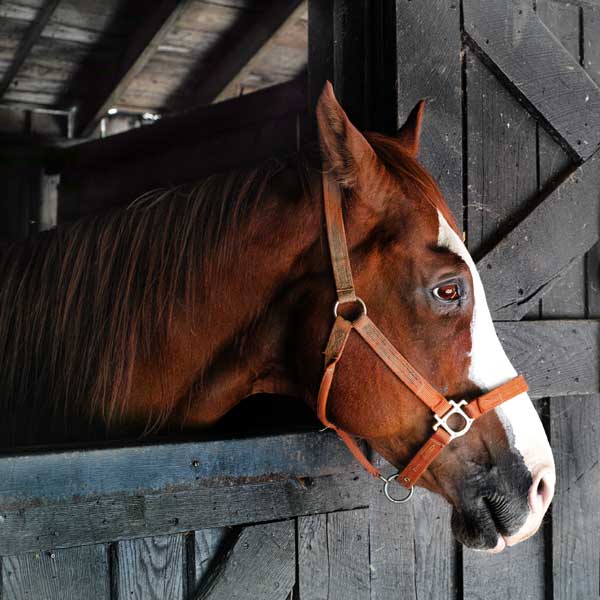Horse owners may assume that summer’s departure means a reprieve from the dangers of laminitis. You may be quite surprised, then, to learn that once summer starts to cool off, the risk of horses developing laminitis actually increases. Laminitis is a complex condition, and the risk factors encompass more than just the typical lush spring and summer grasses. Often-overlooked triggers that come into play especially in the autumn include hormonal, environmental, and barn management factors.

Laminitis can strike horses in the fall, too. Photo by Viktoriia Bondarenko on Shutterstock.
Hormonal and metabolic considerations
In the fall, our horses naturally start to increase the amount of Adrenocorticotropic Hormone (ACTH) their bodies make. This hormone is produced by the pituitary gland, and stimulates the release of cortisol. Cortisol is commonly known as the stress hormone. The cortisol released acts to increase insulin in your horse’s body, and insulin is closely linked to laminitis risk. The more insulin, the higher the risk of laminitis.
All horses experience this spike in ACTH in the fall, typically starting about mid August and going until November or December. A horse that already has elevated ACTH levels due to Pituitary Parts Intermedia Dysfunction (PPID or Cushing’s Disease) will also experience increased ACTH levels. Close monitoring with blood work and an adjustment of medication can help. For horses with otherwise normal ACTH, treating them for PPID during the fall might alleviate some of the laminitis risk.
Environmental concerns
Your horse’s environment is also a factor for fall laminitis. During times when grass is either in a growth phase or under stress, the risk of laminitis goes up due to increases in certain types of starches and sugars called NSC (Non-structural Carbohydrates). We typically don’t see the bright green grass of spring, but fall rains often create a regrowth of pasture which means a spike in NSC levels and the risk of laminitis that goes along with it.

Rain during the autumn season can cause a spike in grass starches and sugars. Photo by J.K. York on Shutterstock.
Another reason for increased laminitis risk in the fall is that grass is under more stress during this time. As a result of warmer days and cooler nights, grasses start to increase their NSC values in response to the stress of extreme temperature variations. Also, pastures that are prone to overgrazing especially in the fall when grass is more scarce will have higher levels of NSC as they struggle to survive.
Best practices in barn management
The manner in which you manage your horse can also change in the fall and lead to an increase in your horse’s risk for laminitis. Many horses are exercised a bit less in the fall months as their owners go back to school. Or the colder weather prompts us to feed them a bit more to stay warm. Or we add blankets, which might help your horse stay warm, but then the extra calories you are feeding end up increasing his weight instead of warming his body.
On the other hand, if you take advantage of the cooler weather to exercise more, you might compensate with increased feed, more forage, or longer turn out time on pasture. Sometimes we compensate too much and our horses end up gaining weight.

How you interact with your horse may change with the seasons. Photo by Brady Barrineau on Shutterstock.
Once a horse starts to become overweight or obese, a few things happen. His joints, muscles, respiratory and cardiovascular systems are strained. This includes the delicate laminae in his hooves that support his entire body weight. Your horse is also more likely to develop a metabolic disorder, such as PPID or Insulin Resistance which are closely linked to laminitis development.
What you can do to help prevent laminitis!
To keep your horse safe from laminitis in the fall, approach your horse’s health from three sides: his metabolic status, his environment, and barn management routines. Make sure his ACTH is measured and monitored. You may want to double check on his insulin levels. Both are simple and inexpensive blood tests.
Make sure your horse’s pasture is healthy and not stressed. Change grazing times to stay away from cool morning grazing or during a regrowth period after getting a lot of rain. The use of a grazing muzzle is another good way to limit your horse’s grass intake and reduce the risk of laminitis.
If your horse’s exercise routine changes in the fall, make sure changes are also made to his feed. Your veterinarian can help you tailor a diet. Keep his body moving with more turnout. Depending on the grazing conditions and your horse’s metabolic status, you may want to use a dry lot instead of pasture. Monitor your horse’s weight with a weight tape, as our eyes tend to deceive us!
How to find your horse's digital pulse, by Pro Equine Grooms on YouTube.
Don’t forget to check your horse’s digital pulse daily, as this is often the first sign that something is wrong in your horse’s hooves. Know the signs of laminitis and use your veterinarian as a resource for your horse’s health. Enjoy the cooler weather, and stay ahead of laminitis this fall!
Read more about laminitis in our ongoing series:
- Part 1: Introduction: What is laminitis in horses?
- Part 2: Causes of laminitis in horses
- Part 3: Fall laminitis: The danger is real





